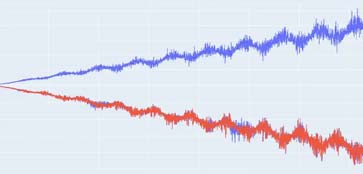AI and ML companies face challenges of data scarcity, compliance issues, class imbalances, and time-consuming annotation. Manual data generation is slow, and real-world datasets can reinforce bias and miss critical edge cases. HabileData’s synthetic data services addresses these issues by providing high-fidelity synthetic data on demand.
We generate synthetic and custom datasets for AI and ML applications, enabling development in areas such as computer vision, predictive modeling, natural language processing, and time-series forecasting. Whether you’re scaling a fraud detection engine or developing an autonomous driving model, our synthetic data enhances the performance of your model while ensuring compliance, diversity, and readiness for rapid iteration.
We design AI-ready synthetic datasets across structured, visual, temporal, and textual formats using techniques such as rule-based logic, data simulation, GANs, and domain-specific modeling tailored to meet your AI and ML project needs.
Generate synthetic datasets for faster model training »

Simulate structured datasets that mimic financial records, user profiles, or patient data for high-compliance use cases in banking, healthcare, and insurance.

Build visual datasets using computer vision synthetic data to train AI models in object detection, facial recognition, and spatial analytics.

Train video classification models using generated scenes for action recognition, autonomous navigation, or behavior detection—all powered by synthetic data for deep learning.

We craft natural language processing synthetic data for chatbots, virtual assistants, and language models that require linguistic diversity and domain accuracy.

Model telemetry, sensor feeds, or predictive analytics using time-based AI data generation with realistic, controllable variance.

For custom verticals such as fraud detection, supply chain modeling, or insurance risk scoring, we deliver tailored synthetic dataset creation pipelines.

Custom datasets for class balance, edge cases, rare patterns.

Ensures privacy and GDPR/HIPAA compliance from the start.

Skip delays with fast synthetic data generation and delivery.

Covers structured, visual, video, and textual formats.

Tackle bias, overfitting with synthetic data augmentation.

Fully compatible with TensorFlow, PyTorch, custom stacks.
Our synthetic data closes AI training data gaps across industries.








Synthetic data is artificially generated information that replicates the structure and statistical properties of real data. Synthetic data for AI is used to train, validate, or augment machine learning models when real-world data is limited, imbalanced, or restricted by privacy concerns.
We offer tabular, image, video, text, time-series, and domain-specific synthetic data generation, tailored to specific use cases such as fraud detection, computer vision, predictive maintenance, and NLP model training.
We use statistical modeling, rule-based systems, and advanced generative models such as GANs and simulation engines. Each dataset undergoes quality checks for feature consistency, distribution matching, and label integrity.
Yes. Synthetic data augmentation allows you to expand your training datasets with controlled variations, balance underrepresented classes, and simulate rare edge cases to improve model generalization.
Synthetic data improves privacy compliance, enhances training data quality, accelerates model development, and allows you to simulate conditions that are difficult or costly to capture in real life.
Our stack includes AI data generation frameworks such as GANs, variational autoencoders (VAEs), probabilistic modeling tools, simulation environments, and custom rule engines tailored to client needs.
Absolutely. We align data generation parameters to your architecture, input format, output labels, and class distribution, ensuring compatibility with your ML pipelines.
By filling data gaps, addressing bias, and supporting rare event modeling, synthetic data for machine learning helps increase accuracy, reduce overfitting, and speed up deployment especially in regulated or data-scarce domains.




